#Tudor Owen
Text
In 1939, a time traveler from an undisclosed time in the 20th Century travelled back to Berlin to try and assassinate Adolf Hitler and prevent World War II. He ran out of time before he could accomplish his goal and history continued on its natural course. ("No Time Like the Past", The Twilight Zone, TV)

#nerds yearbook#1939#time travel#tz#twilight zone#rod serling#justus addiss#hitler#germany#ww2#wwii#world war 2#world war ii#dana andrews#paul driscoll#patricia breslin#malcolm atterbury#adolf hitler#robert cornthwaite#john zaremba#c lindsay workman#marjorie bennett#tudor owen#james yagi#robert f simon#gene coogan#peter humphreys#robert mccord#bobs watson
4 notes
·
View notes
Text

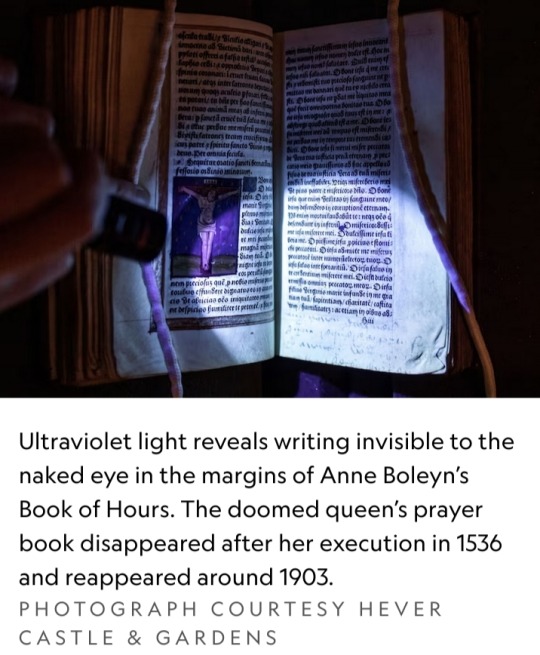
By Leslie Patrick
1 August 2023
Anne Boleyn (c. 1501 or 1507 – 19 May 1536), King Henry VIII's second queen, is often portrayed as a seductress and ultimately the woman responsible for changing the face of religion in England.
In reality, she was a fiercely intelligent and pious woman dedicated to education and religious reform.
But after her arrest and execution on false charges of adultery and incest in May 1536, Henry VIII was determined to forget her memory.
Her royal emblems were removed from palace walls, her sparkling jewels tucked away in dark coffers, and her precious books disappeared from the pages of time.
One of Boleyn’s books that has reappeared is the Book of Hours, a stunning prayer book, printed around 1527 with devotional texts designed to be read throughout the day, features hand-painted woodcuts — as well as a rare example of the queen’s own writing.
In the margins of one of the beautifully decorated pages, she penned a rhyming couplet followed by her signature:
“Remember me when you do pray, that hope doth lead from day to day, Anne Boleyn.”
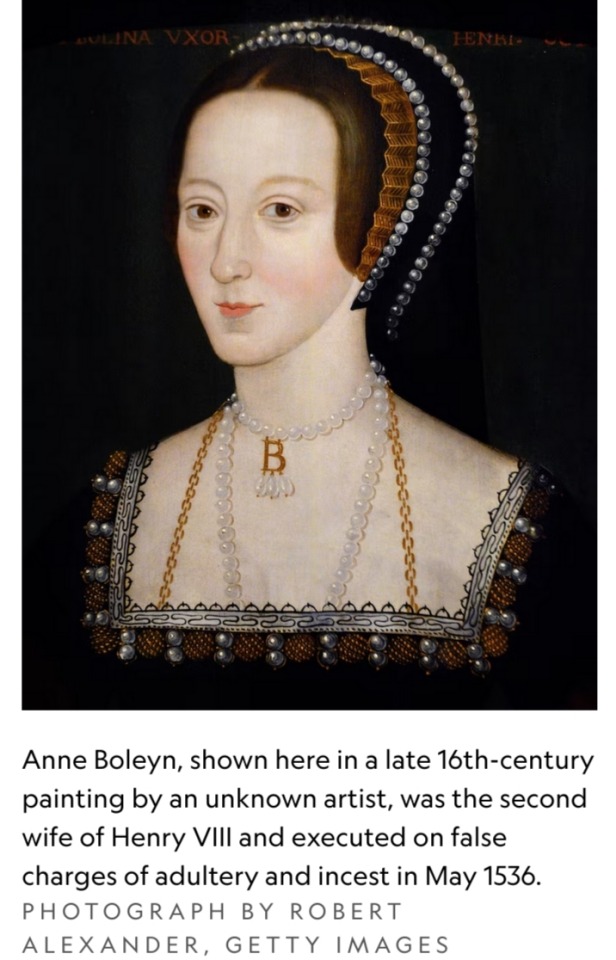
The book vanished with Boleyn’s execution in 1536, then resurfaced around 1903 when it was acquired by the American millionaire William Waldorf Astor (31 March 1848 – 18 October 1919) after he purchased Hever Castle, Anne Boleyn’s childhood home in the English countryside.
The hiding place of the disgraced queen’s devotional tome had been a mystery for centuries, until recent research by a university student uncovered hidden signatures that helped trace its path through history.
The discovery
The book’s whereabouts in the 367 years between Boleyn’s death and its reemergence remained puzzling until 2020 when Kate McCaffrey, then a graduate student at the University of Kent working on her master’s thesis about Anne Boleyn’s Book of Hours, found something unexpected in the margins of the book.
“I noticed what appeared to be smudges to the naked eye,” recalls McCaffrey, assistant curator at Hever Castle since 2021.
Intrigued, she borrowed an industrial-strength ultraviolet light and set it up in the darkest room of Hever Castle.
Ultraviolet light is often used to examine historical documents because ink absorbs the ultraviolet wavelength, causing it to appear darker against the page when exposed.
“The words just came through. It was incredible to see them underneath the light, they were completely illuminated,” the curator recalls.
McCaffrey’s theory is that the words were erased during the late Victorian era when it was popular to cleanse marginalia from books or manuscripts.
But thanks to her extraordinary detective work, these erased words turned out to be the key that unlocked the tale of the book’s secret journey from certain destruction at the royal court to safety in the hands of a dedicated group of Boleyn’s supporters.
The guardians
Indeed, various pages throughout the text reveal the names and notations of a string of Kentish women — Elizabeth Hill, Elizabeth Shirley, Mary Cheke, Philippa Gage, and Mary West — who banded together to safeguard Anne's precious book and keep her memory alive.
While it’s unclear how the book was initially passed to these women, Anne Boleyn expert Natalie Grueninger suggests it was gifted by Anne to a woman named Elizabeth Hill.
Elizabeth grew up near Hever Castle, and her husband, Richard Hill, was sergeant of the King’s Cellar at Henry VIII’s court.
There are records of the Hill’s playing cards with the king, and there may have been a friendship between Elizabeth and the queen that prompted Boleyn to pass her prayer book on before her execution.
“This extended Kentish family kept the book safe following Anne’s demise, which was an incredibly brave and bold act considering it could have been considered treasonous,” says Grueninger, podcaster and author of the book The Final Year of Anne Boleyn.
Anne’s Book of Hours was passed between mothers, daughters, sisters, and nieces until the late sixteenth century, when the last name makes its appearance in its margins.
“This story is an example of the women in the family prioritizing loyalty, friendship, fidelity, and a personal connection to Anne,” says McCaffrey.
“The fact that the women have kept it safe is a really beautiful story of solidarity, community, and bravery.”
The book, currently on display at Hever Castle, is a touchstone of the enigma that was Anne Boleyn.
Castle historian and assistant curator Owen Emmerson points out that the book contains Anne’s DNA on the pages from where she touched and kissed it during her daily devotions.
“This was a really beloved possession of hers,” says Emmerson.
“Because of what happened to Anne Boleyn, we don’t have a vast amount of information in Anne’s own words. But the physical remnants of her use of the book, and the construction of that beautiful little couplet, have her identity in them.”
While Anne’s Book of Hours has finally found its way home, the research into this intriguing historical mystery is not yet over.
McCaffrey continues to chart the book’s provenance through the centuries to find out where it was hiding all this time.
The discovery of the inscriptions illuminates the book’s furtive journey, providing us with a glimpse into the controversy, loyalty, and fascination that Anne Boleyn has engendered for the past 500 years.

#Anne Boleyn#King Henry VIII#Book of Hours#William Waldorf Astor#Hever Castle#Kate McCaffrey#University of Kent#ultraviolet light#Natalie Grueninger#Owen Emmerson#Elizabeth Hill#Elizabeth Shirley#Mary Cheke#Philippa Gage#Mary West#The Tudors#House of Tudor#British Royal Family
466 notes
·
View notes
Text
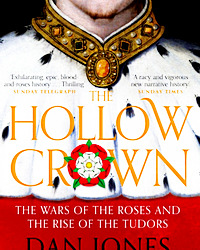




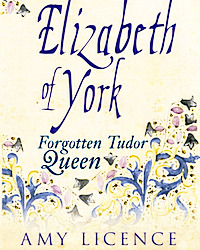
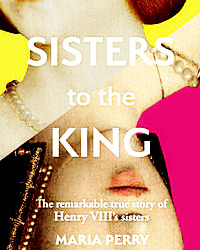

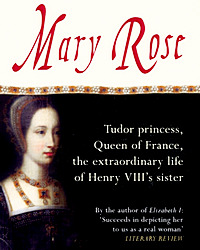
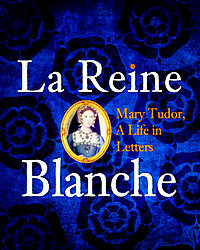
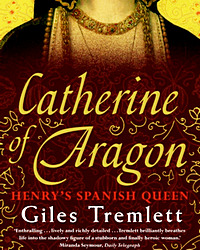


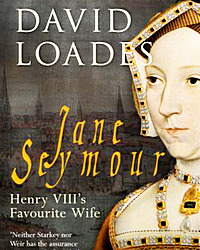





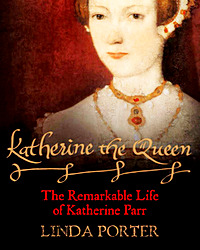

♕ @dailytudors: TUDOR WEEK 2023 ♕
Day Five: Most Used Tudor Related Resource >> My slowly expanding collection of Tudor nonfiction books.
#tudorweek2023#margaret beaufort#owen tudor#jasper tudor#margaret tudor#mary tudor#katherine of aragon#anne boleyn#jane seymour#anne of cleves#kathryn howard#catherine parr#my edits#dailytudors#yes I know i don't own any of the latter generation/s but I did have a huuuuge bookdepository wishlist before it shut down#any recommendations for a website like that please let me know
227 notes
·
View notes
Text
Tudor Week 2023

To celebrate our belated three-year anniversary we are hosting Tudor Week 2023. This is going to be hosted from Monday the 31st of July to Sunday the 6th of August.
The week will go as follows:
Day 1 - Monday, 31st of July : Favourite Tudor Rivalry
Day 2 - Tuesday, 1st of August : Favourite Female Tudor Family Member
Day 3 - Wednesday, 2nd of August : Best Tudor Myth
Day 4 - Thursday, 3rd of August : Favourite Male Tudor Family Member
Day 5 - Friday, 4th of August : Most Used Tudor Related Resource
Day 6 - Saturday, 5th of August : Favourite portrayal of a Tudor Family Member
Day 7 - Sunday, 6th of August : Favourite Tudor Mentor and Mentee relationship (can be a Tudor familial relationship, or a Tudor and a courtier relationship)
This can cover all events and media that a Tudor family member is present, so from Owen Tudor to Elizabeth Tudor, and may include spouses and acknowledged children of direct members of the Tudor family (if unsure who we cover please check our Family page). We have attempted to make it as broad as possible and no pressure if you are late with some of the days, we will still reblog.
Previous Years: 2021, 2022
Be sure to tag your posts TudorWeek2023 and DailyTudors, looking forward to seeing your posts!
- The Team at DailyTudors
#tudorweek2023#henry vii#henry viii#edward vi#mary i#elizabeth i#owen tudor#catherine de'valois#edmund tudor#margaret beaufort#jasper tudor#catherine woodville#elizabeth of york#arthur prince of wales#katherine of aragon#margaret queen of scotland#james iv of scotland#archibald douglas#henry stuart#anne boleyn#jane seymour#anne of cleves#kathryn howard#catherine parr#mary queen of france#louis xii#charles brandon#henry fitzroy#announcement
138 notes
·
View notes
Text
Mystery also surrounds Owen Tudor's marriage, but there is no question as to its validity or the legitimacy of his offspring. Richard III's proclamations described Tudor as a bastard; his marriage, however, was not disputed.
Ralph Griffiths, "Tudor, Owen [Owain ap Maredudd ap Tudur] (c. 1400–1461)", Oxford Dictionary of National Biography (2004, updated 2008)
#I love that you can just say#“Catherine de Valois and Owen Tudor were married and their children legitimate source: Richard III himself”#but ricardians will still be mad and argue about it#owen tudor#catherine de valois#edmund tudor#jasper tudor#historian: ralph griffiths
33 notes
·
View notes
Photo







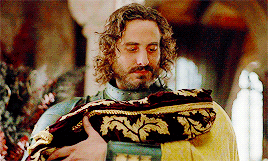
❝ The effigy that lay on Catherine of Valois’ coffin at her funeral can still be seen in Westminster Abbey, dressed in her red painted shift, while her body lies under the altar in Henry V’s chantry. Sadly, however, Owen Tudor, with whom this story also began, is nowhere remembered. After the monastery of Greyfriars was dissolved in 1538, his tomb vanished. The ancestor of all the Tudors monarchs, and every British monarch since, now lies in a grave beneath a 1970’s housing estate. Perhaps, like Richard III, he will find someone willing to find him a more dignified place. For those who lived under the Tudor kings and queens, what mattered was not their Welsh origins of the Tudors, but the royal marriage of the union of the rose to which James was proclaimed heir in 1603: the symbol of peace, harmony and stability. For us, however, the name of the rose is Tudor, and the family story that began with Owen ends with a salute to the memory of a clumsy servant, who with a pirouette and a trip, fell into the lap of English history.Leanda de Lisle, Tudor: The Family Story (casting idea by @ourgraciousqueen)
292 notes
·
View notes
Quote
It is [Katherine of Valois]'s refusal to submit to male authority, as much as her wish to remarry, that lays her open to the accusation that she was governed by her lust, because her behaviour, from the lords’ perspective, was unwise, ill-advised, and reckless. In addition to Katherine’s disobedience they likely also felt disappointed in her. She had been married to a revered king, around whose memory an intense culture of commemoration flourished. Even without the potential problem of an influential stepfather for Henry VI, Katherine’s wish to marry any man, let alone a mere Welsh squire, was a profound betrayal of Henry V’s memory.
Katherine J. Lewis, “Katherine of Valois: The Vicissitudes of Reputation” | Later Plantagenet and the Wars of the Roses Consorts: Power, Influence, and Dynasty (2023)
It is conceivable that Katherine’s actions were viewed by those lords as proof of her wrongheadedness and expressed by them in the misogynistic terms conveyed by the chronicler. While this may have been how Katherine was regarded by some at court, there is no evidence that this was how she was viewed more widely. As noted above, her marriage was not publicly known, and she was not in disgrace.
#catherine of valois#owen tudor#henry v#historicwomendaily#historian: katherine lewis#later plantagenet and the wars of the roses consorts
100 notes
·
View notes
Note
After reading your article, marriages like Eleanor and Humphrey, Katherine and John, Henry VIII and Ambeline are described as women seducing men, and men being victims... But marriages like Owen Tudor and Catherine, Richard Woodville and Jacqueta in Luxembourg, will have completely ignored the subjective initiative of women, and the description of men seducing women should be class/gender discrimination?
Hi anon, I think you're asking about what kind of narratives there were around the marriages between men and women of significantly higher status, the inverse of the type of relationships I was talking about in this blogpost I made on my sideblog that focused on Eleanor Cobham, where women married men of much higher status than themselves.
There seems to be comparatively little scholarship in this area and it would be fascinating to see what commonalities and links a study would produce. The marriage of men to women of significantly higher status than themselves does appear to have been fairly common but does not seem to have generated the same amount of commentary and infamy as the relationships between women who married men of significantly higher status. I don't mean that they didn't contract comment but that there was little sustained comment - who remembers Alice de Lacey and Eubulus le Strange? Katherine Woodville and Sir Richard Wingfield? The only high profile case I can think of is Joan of Kent and Thomas Holland.
From what I could find, there does not seem to be the equivalent narrative of the man of lesser status seducing or bewitching the high-status woman into marriage. Instead, what seems to be the common theme is, as Katherine J. Lewis says, "a standard medieval antifeminist notion: that women were naturally inclined to lust and rendered irrational to it."
Lewis was talking specifically about the case of Catherine de Valois. One contemporary chronicler remarked that she was "unable to fully control her fleshly passions" when she married Owen Tudor and even chastises her for keeping the marriage secret "so she did not claim honourable title [of marriage] during her lifetime". Tudor was described by another chronicle as "no man of birthe nother of lyflode", implying his unworthiness. But there seems to have been little rancour or blame directed at Tudor.
It's not until the 16th century where the image of Catherine as governed by her lust became the dominant narrative around her remarriage, perhaps because the rise of the Tudor dynasty and Henry VIII's marital life lent itself to it. One notable example is Edward Hall, who in 1548 described Catherine as:
beyng young and lust, folowyng more awne appetite, then frendely counsaill and regardyng more her priuate affecion then her open honour
He describes Tudor, on the other hand, as a "goodly gentilman & a beautyful person, garnished with many Godly gyftes, both of nature & of grace" - so the issue here is not that Tudor is a social-climber but that Catherine is at the mercy of her sexual desires. Probably the most extreme example of this is Nicholas Fox's claim that Catherine "bey[ed] like a very dronkyn whore" in bed with Tudor - a factoid often gleefully repeated by historians and commentators to proclaim Tudor's sexual prowess despite the fact that Fox made the claim in 1541 and is far from a reliable source. The fact that it has been almost universally used to celebrate Tudor by demeaning Catherine shows how long-lasting this type of narrative is. Polydore Vergil similarly describes Catherine dismissively as "yonge in yeres, and thereby of lesse discretion to judge what was decent for estates" and then focuses on Tudor's lineage and good qualities. Kavita Mudan Finn notes that he "succeeds in suppressing what on the surface to appears to be her agency - a second marriage of her own free will - by literally changing the subject to Owen, and by extension, Henry, Tudor". This same suppression of Catherine's agency appears again in Michael Drayton's Englands Heroicall Epistles where Catherine appears to be acting on her own initiative, wanting Tudor for herself, but Drayton has Tudor displace Catherine's agency by citing destiny as the impulse behind their union. Catherine "is reimagined as a 'a Royall Prize' for Tudor to claim", per Finn. In short, Catherine appears to be cast as oversexed and/or uncontrollable while Tudor's individual qualities and descent are celebrated and their union is seen as governed by destiny and fate.
Joan of Kent has fared similarly to Catherine in that she is primarily remembered as governed by her lust. Famously described as Froissart as "a woman more beautiful and amorous than any in the realm" and by Adam of Usk as a "woman given to slippery ways", Joan had married Thomas Holland clandestinely, then been convinced by her family to marry William Montagu (the son of the Earl of Salisbury). Around eight years later, Holland then petitioned the papacy to return Joan to him, resulting in a public scandal. When Holland died in 1360, Joan made another shocking match, this time marrying Edward of Woodstock, Edward III's eldest son and heir known to history as "the Black Prince". Joan was sometimes referred to the "Fair Maid of Kent" or "the Virgin of Kent", probably sarcastically. Thomas Austin's wife was alleged to claim that Joan's son with the Prince, Richard II, was "nevere the prynses son and ... his moder [i.e. Joan] was nevere but a strong hore". Froissart recorded a conversation between Richard and his usurper, Henry IV, where Henry alleged that a bastard gotten in adultery. W. Mark Ormrod also suggested that various narratives about Joan in the Peasants Revolt built on her carnal reputation and may have reflected even more salacious tales floating around. Thomas Walsingham emphasises Joan's other alleged, inordinate appetites around the time of her death - gluttony ("hardly able to move about because she was so fat") and a love of luxury.
It is, however, very difficult to determine how much of Joan's reputation was shaped to her marriage to a man of significantly lower status or how much it was shaped by her marriage to the man, at the time, was to be the next king of England and to whom her marriage was both scandalous and unconventional. Likely, her reputation was formed by both marriages, both feeding the other. The deposition of her son also meant that her reputation was used as a way of slandering him. Thomas Holland, on the other hand, barely seems to be mentioned, let alone criticised - even if he was in his mid-20s when he married the 12 year old Joan. In fact, Henry Knighton's chronicle positions Holland as seduced by her, crediting Holland's "desire for her" as the cause that she had been divorced from her second husband, Montagu.
Jacquetta and Richard Woodville do not seem to have drawn the same level of commentary. Lynda J. Pidgeon notes that "the marriage ... aroused no comment from English chroniclers until after the couple’s daughter, Elizabeth, married King Edward IV in 1464". though it was recorded in by continental chronicles, such as Enguerrand de Monstrelet, who recorded recorded:
In this year [1436], the duchess of Bedford, sister to the count de St. Pol, married, from inclination, an English knight called sir Richard Woodville, a young man, very handsome and well made, but, in regard to birth, inferior to her first husband, the regent, and to herself…
This has similar echoes to Hall's and Vergil's comments about the marriage of Catherine and Owen Tudor - Jacquetta marries from "inclination" a man inferior to herself but who is otherwise "very handsome and well-made". Hall includes the story of their marriage immediately after his account of Catherine and Tudor, which, as Finn says, "hints at a growing interest - and indeed, anxiety - about women's desires". Like Catherine, Jacquetta is described as marrying Woodville "rather for pleasure then for honour" and "without coū∣sayl of her frendes". Her family is said to disapprove but can do nothing - sentiments also found in Monstrelat and Jean de Wavrin. Rather than dwelling on Woodville's qualities as he does with Tudor's, Hall describes Woodville "lusty" and notes that he was made Baron Rivers, which may indicate . He does, however, mention the marriage of their daughter, Elizabeth, to the future Edward IV, a subject which he promises to return to.
The continuation of Monstrelet's chronicle links Jacquetta and Woodville's marriage to that of their daughter, Elizabeth Woodville's marriage to Edward IV, "thus linking these two unorthodox women together", per Finn. Here's what this continuation says:
After the death of the duke, his widow following her own inclinations, which were contrary to the wishes of her family, particularly to those of her uncle, the cardinal of Rouen, married the said lord Rivers, reputed the handsomest man that could be seen, who shortly after carried her to England, and never after could return to France for fear of the relatives of this lady.
It is likely that Jacquetta's unconventional second marriage helped render Jacquetta's reputation suspect and tempting to speculate that that it rendered her vulnerable to the accusations that she had used witchcraft to make Edward IV marry her daughter, Elizabeth Woodville. The unpopularity in France and Burgundy of her first marriage to John of Lancaster, Duke of Bedford and Regent of France may have also played into this view. Ricardians have certainly framed her as her as a seductress and her family as scheming, power-hungry social climbers in that regard - while also treating her as driven by her lust for Woodville. However, there is no evidence that this was the view of Jacquetta at the time, either in England or in France.
Richard Woodville is unique amongst the three men I've mentioned in that he seems to have been reviled as a man "brought up from nought", along with the rest of his and Jacquetta's prodigious offspring. This view has been spurred on by Ricardian historians that have reviled Elizabeth Woodville, where the entire family is depicted as a brood of grasping social climbers. An invasive species, if you will. I think it is likely that Jacquetta and Richard Woodville's marriage has helped furnish this view, particularly for Woodville himself. However, this particular image of Woodville and his children only seems to emerge with Elizabeth's marriage to Edward IV and the tensions between Edward, Woodville, George, Duke of Clarence and Richard Neville, Earl of Warwick ('the Kingmaker'), rather than Woodville's marriage to Jacquetta.
In short: the tendency seems to be depict the high-status woman as indulging in her own sexual desires and acting on her own will, disregarding reason, counsel and sense, while the man of lesser-status is considered handsome but bears little or no responsibility for seducing the woman. He is of less interest to contemporary chroniclers. Woodville seems to be an exception, rather than the norm, in being seen as guilty of social climbing and there it is the marriage of his daughter, not his own marriage, that gave that reputation. Owen Tudor, as the patriarchal originator of the Tudor dynasty, was celebrated by Tudor-era writers for his qualities and Welsh lineage - it would be easy to conclude that had he not been the grandfather of Henry VII, he would be entirely forgotten.
There do not seem to be any contemporary claims than Tudor, Holland or Woodville seduced, bewitched or raped their wives, whatever historical fiction novelists or pop historians claim. However, it should be noted that there are many cases where other high-status women could be abducted and forced into marriage. One example is Alice de Lacey, Countess of Lancaster. For those cases, I suggest reading Caroline Dunn's Stolen Women. It is far too long and complicated subject to summarise in a tumblr post.
Sources:
Caroline Dunn, Stolen Women in Medieval England: Rape, Abduction, and Adultery, 1100–1500 (Cambridge University Press, 2017)
David Green “‘A woman given to slippery ways’? The reputation of Joan, the Fair Maid of Kent”, People, Power and Identity in the Late Middle Ages: Essays in Memory of W. Mark Ormrod (Routledge, 2021, eds. Gwilym Dodd, Helen Lacey, Anthony Musson)
Katherine J. Lewis, “Katherine of Valois: The Vicissitudes of Reputation”, Later Plantagenet and the Wars of the Roses Consorts: Power, Influence, and Dynasty (eds. J. L. Laynesmith and Elena Woodacre, Palgrave 2023)
Kavita Mudan Finn, The Last Plantagenet Consorts: Gender, Genre, and Historiography, 1440-1627 (Palgrave Macmillan, 2012)
W. Mark Ormrod, "In Bed With Joan of Kent: The King's Mother and the Peasants Revolt", Medieval Women: Texts and Contexts in Late Medieval Britain (ed. Jocelyn Wogan-Browne, Rosalynn Voaden, Arlyn Diamond, Ann Hutchison, Carol Meale, and Lesley Johnson, Brepols 2000)
Lynda J. Pigdeon, Brought Up Of Nought: A History of the Woodville Family (Fonthill 2019)
#god i hope this makes sense as i'm tired and i've been working on this for too long#also i don't know a lot about the woodvilles so most of my discussion of them is drawn from a quick research session so#jacquetta of luxembourg#richard woodville#joan of kent#thomas holland#catherine de valois#owen tudor#asks#anonymous#text posts
14 notes
·
View notes
Text
#owen tudor#jasper tudor#henry vii#arthur prince of wales#margaret tudor#henry viii#mary tudor#mary i#elizabeth i#edward vi#poll
43 notes
·
View notes
Text
OT3 verse Henry does have to have a conversation with (almost all - maybe not the three youngest) his kids about the Nonsense he got up to 1534-36 and it’s honestly just like It’s What He Deserves.
Elizabeth, thinking that she was the cause of him treating her mother and other dad so cruelly, that if she’d been a boy he wouldn’t have done (also I’m pretty sure she is Angry)
Tommy who feels like he should be more like Henry often - like that he’s not living up the expectations of a 16th century heir to the throne (which is a good thing sweetheart!) and that he cannot allow himself to be less than understanding and forgiving and not angry getting to hear that it’s a good thing that you aren’t like me in many ways actually.
George who is…listen, Henry is like “George you were the most wonderful miracle in the world - you are my son, you will always be my son, my prince’ because it’s true. George was a test that Henry passed that he only realised afterwards was a test.
Liam whose early mistakes Henry understands a lot more (which to be clear, it was in the lines of ‘had a crush on two ladies at once, didn’t tell them about each other and decided to be with them both’ rather than anything else) than his other parents.
Meg. OH MY GOSH MEG MY KNIGHT. Meg is actually the hardest because Meg, they have such a sense of Justice And Fairness and she looks up to her father the king and he has to explain that sometimes, sometimes he’s not great.
Owen is just like: Never Do That Again Or I Will Kill You (serious). He is like twelve.
#ot3: political power trio#lil and her ridiculous aus#tudors ot3 verse reference#ned and pippa are a bit different#(pippa’s is a spoiler and ned is…Ned)#ned kind of didn’t need a talk about it because he knew from Owen and he’d processed the whole thing
11 notes
·
View notes
Photo
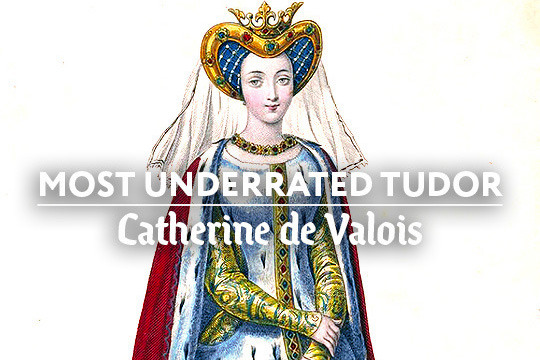

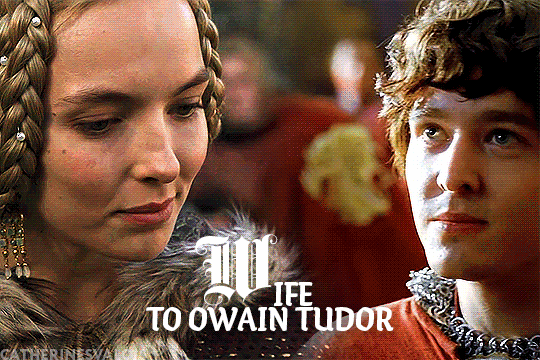
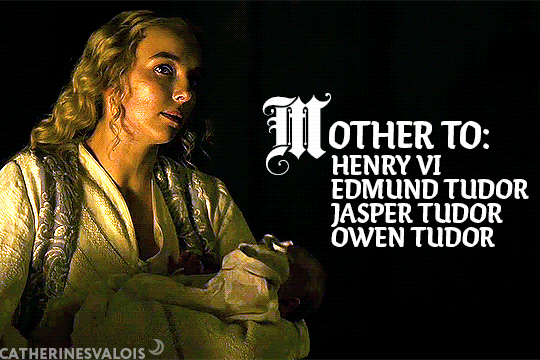
TUDOR WEEK 2022
DAY 5 MOST UNDERRATED TUDOR FAMILY MEMBER(S) → CATHERINE DE VALOIS
Catherine de Valois was the daughter of Charles VI and Isabeau of Bavaria. During the Hundred Years War, Catherine was contracted to marry Henry V of England as part of the peace treaty, known as the Treaty of Troyes. Their marriage was intended to pave the way for France and England to cease fighting with Henry V on the throne of England and France. This didn’t happen. Henry V died two years later leaving behind not only the widow Catherine, but their infant son, Henry VI. At some point after Henry V died, Catherine entered into a relationship with Owain Tudor. Owain ap Maredudd ap Tudur (or Owen Tudor) was a Welsh courtier from a distinguished family from Penmynydd. At the time of their relationship, Owain was installed as either the keeper of her wardrobe or household. Altogether, Catherine had three sons with Owain and the couple remained together until her death in 1437. Her sons Edmund and Jasper were close with their half-brother, King Henry VI. While there is usually doubt as to the legitimacy of Owain and Catherine’s marriage, an entry in the Parliament Rolls states that Edmund and Jasper (the two eldest sons of Owain and Catherine) were conceived and born within wedlock. This would suggest that some form of evidence or proof of marriage was the basis of this declaration.
For a family tree for Catherine and her children see this → post
I want to thank @richmond-rex for their helpful information on the legitimacy of Catherine and Owain’s marriage and their children. If you love Tudor content, go follow!
Image
1. Catherine of Valois by Edward Hargrave, 1842.
#tudorweek2022#dailytudors#catherine de valois#catherine of valois#owain tudur#owain tudor#owen tudor#house of tudor#tudorerasource#tudoredit#perioddramaedit#periodedit#perioddramasource#gifshistorical#userperioddrama#userbennet#historicwomendaily#women in history#historical ladies#historical women#henry v#henry vi#tudor history#gifs: mine#richmond-rex
260 notes
·
View notes
Photo

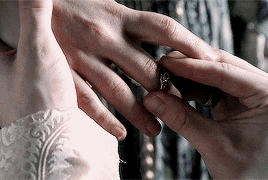






→ history + owen tudor and catherine of valois
requested by anonymous
Queen Catherine, being young and lusty, following more her own wanton appetite than friendly counsel and regarding more private affection than prince-like honour, took to husband privily a gallant gentleman and a right beautiful person, imbued with many goodly gifts both of body and mind, called Owen Tudor. — Raphael Holinshed, Chronicles of England, Scotland, and Ireland
#historyedit#owen tudor#catherine of valois#medieval history#15th century#english history#house of tudor#house of valois#historical fancast#*history#*requests#*mine#*historical couples#cw: blood#sorry for the delay!
268 notes
·
View notes
Text

Criticism has clearly pinged off Dr Mayhew like a bullet on a tank
11 notes
·
View notes
Text
She speaks English well but her accent marks her out, he speaks English well but his accent marks him out. They are outsiders, strangers in a land not their own. Her fingertips ache to touch him, to hold his hand and feel that she is not alone.
the world anew by heartofstanding
This one line is a rather beautiful summation of why the beginnings of Catherine de Valois and Owen Tudor's relationship is so relatable. It is so human, that need for connection in a strange land.
7 notes
·
View notes
Text
Who is interested in a Tudor Week 2023?
#henry vii#henry viii#edward vi#mary i#elizabeth I#owen tudor#catherine de'valois#edmund tudor#margaret beaufort#jasper tudor#catherine Woodville#elizabeth of york#arthur prince of wales#katherine of aragon#margaret queen of scotland#james iv of scotland#archibald douglas#henry Stuart#anne boleyn#jane seymour#anne of cleves#kathryn howard#catherine parr#mary queen of france#louis xiii#charles brandon#henry fitzroy
70 notes
·
View notes
Text
I've been thinking about how Katherine J. Lewis made this remark about Catherine de Valois and Isabeau of Bavaria
It is often claimed, without supporting evidence, that Isabeau was notoriously promiscuous, sometimes in discussions of Katherine. Strickland strongly implies this, calling Isabeau a “wicked woman” and a “degraded woman.” None of the scholarship on Katherine has explicitly drawn comparisons with her mother. Yet the two have received parallel treatment because the claim that Katherine was governed by her fleshly passions is taken at face value, without acknowledgement of the ideological implications of such obviously gendered criticism. (x)
Because while scholarship doesn't make this comparison*, there's Denise Giardina's Good King Harry and Brenda Honeyman's Good Duke Humphrey, where Catherine is presented as the young and beautiful version of her mother - conniving, evil, promiscuous. Since Giardina describes Isabeau in quite grotesque terms, there's also the implication that Catherine will one day become as monstrous in appearance as her mother, her exterior finally matching her interior.
However, the vast majority of novels about Catherine are sympathetic and view her 'notorious promiscuity' as an unfair and untrue slander that denies Catherine's status as a romantic heroine. These novels are frequently positioned as interventions, reclaiming Catherine's story as a tale of true love.
All the while, however, these novels stick to the traditional view of Isabeau of Bavaria. She is still "conniving, evil, promiscuous", fat and thus grotesque, and an abusive mother (this characterisation also pops up in novels about Isabelle de Valois too, though Isabelle's reputation is for tragedy, not romance or promiscuity). Typically, Isabeau terrorises Catherine as a child, coldly pimps her out once she's of an age to be married, and always derides her. Isabeau, often depicted as physically repulsive because of her obese, aged body, is also frequently jealous of Catherine for her youth and beauty. Giardina presents Isabeau on the other hand as being absolutely deluded about her appearance, imagining herself to be as beautiful and as sexually desirable as Catherine to the point where she offers herself sexually to her son-in-law upon hearing Henry V has quarrelled with her daughter. The scene makes clear her delusion by focusing on Henry's revulsion of her physical body which she has exposed to him a grotesque attempt at seduction.
While the purpose Isabeau serves in these narratives is both a matter of perceived "historical accuracy" (though some of these books were published after the historical reassessments of Isabeau by the likes of Tracy Adams and Rachel Gibbons) and to render Catherine as sympathetic as possible (setting the scene for her "rescue", usually by either Henry V or Owen Tudor, both serving as her romantic hero), it also feels like Isabeau is being used as to refute Catherine's reputation for "notorious promiscuity", presenting Isabeau as the most monstrous iteration of that so that the behaviour that earns Catherine that reputation is always considered a far lesser, if not wholly unproblematic, infraction.
In other words, Isabeau is the dark mirror of Catherine. Isabeau's sexual desires are about the physical, not the personal. She is insatiable and undiscerning, concerned only with her own gratification. She's at the mercies of her uncontrollable lust, bestial, and ultimately shallow. But Catherine? Catherine is driven by only pure emotions. She's in love, she's a romantic. Catherine doesn't fuck, she makes love. Catherine is the furtherest thing from a slut - a woman searching for true love. If you want to see a real slut, look at Isabeau. Not Catherine, a martyr to true love.
(Or Eleanor Cobham, who often serves as an antagonist to Catherine after Catherine is widowed - though, unlike Isabeau, Eleanor's scandalous sexuality is often suppressed. She coldly uses her sexuality to advance, unlike Isabeau, who is overcome by lust, or Catherine, who is in love. Eleanor, it could be argued, serves a dark mirror of Owen Tudor - the lover of lesser status who advances through the sexual conquest of a high status individual.)
None of these women's reputation for promiscuity is particularly warranted by modern standards. Isabeau's alleged adulteries come from Burgundian propaganda that aimed to undermine her and Louis, Duke of Orleans, or else developed in the years after the Treaty of Troyes to discredit Charles VII's claim to the throne. There is no evidence that this was anything more than slander. Catherine's reputation was borne from the fact she secretly remarried after Henry V's death to a man of lower status in defiance of the minority council. Eleanor's one known sexual relationship was with a man she later married and who probably should be considered estranged from his wife at the time. Eleanor could be considered as a homewrecker (though I would argue such a label ignores the political circumstances in which Humphrey, Duke of Gloucester's first marriage fell apart) but not necessarily promiscuous. But even if they were promiscuous, isn't time we moved on from demonising women for their sexuality?
* Well, John Ashdown-Hill calls Isabeau of Bavaria "something of an nymphomaniac" and says it's "possible that Catherine inherited her mother's strong sexuality", but I hardly count him as a scholar and you can't inherit sexuality, wtf.
8 notes
·
View notes